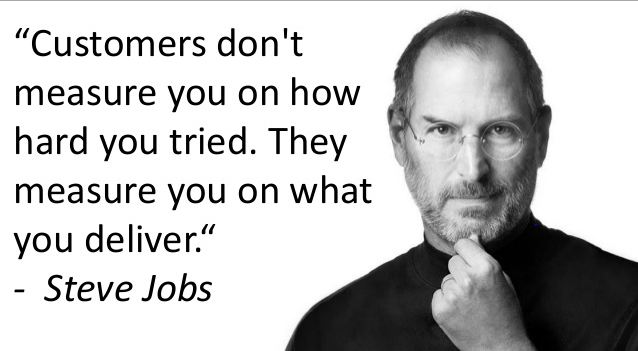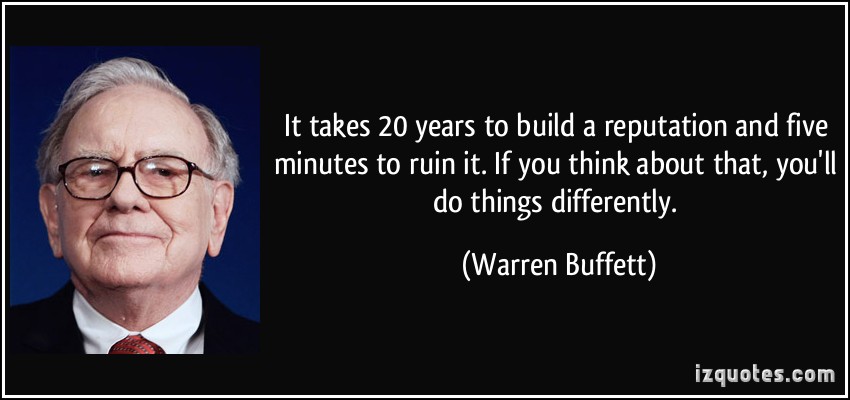Online marketing is essential to companies worldwide from small businesses to large fortune 500 companies to promote and sell their products and services. The rise of mobile internet usage is rapidly changing consumer behavior and online marketing strategies. For the business to be successful, one must figure out the best ways to drive customers to their brand through search engines, advertising, content marketing, social media marketing, email marketing and other targeted online marketing strategies. Online business not only starts with marketing, but must be carried over throughout the sales process, execution and support of the products and services as well.
Here is our Ultimate Guide to Online Marketing:
1. Know Your Customers:
With demographic targeting in Google AdWords, you can reach your target audience who are likely within the demographic groups that you choose from. Online marketing is successful only when it is found by the right customers at the right time during their decision-making process. In case you just launched an e-commerce website, you might resonate with the challenges of gaining trust of your customers. This is one factor that can convert your hesitant yet potential customer to a buyer. Either working with an enterprise brand or running a small business, a lesson is ought to be kept in mind—timing is everything!
Customers who want to shop with a brand but due to any reason are resistant to the purchase, coupon codes are most pertinent for them.
2. Create Your Marketing Plan:
The proper marketing plan must include the marketing channels you are targeting and your acquisition cost per customer. Also , determine your ad budgets based on your ROI and lifetime customer value (LTV). It’s not an investment, nor is it an expense but the moment it is performed rightly, it works.
3. Establish Your Goals & Key Performance Indicators (KPI’s):
Online marketing initiatives will fall into the following core areas: awareness, engagement, decision, and retention. Understand which of these four functional areas are most important to your business and why. Make sure that your marketing campaigns align with the goals that are most important for your business to achieve right now, in the medium term, and down the road. Develop the strategy which helps you to achieve Key Performance Indicators (KPI’s), business objectives and milestones. Examples of KPIs include revenue growth, average order value, Cost Per Lead, Customer Lifetime Value, ROI, conversion rates, organic search growth, social media reach, mobile traffic conversion rates and more.
4. Establish Your Brand:
Spread awareness of your brand among your target audience. You should always narrate brand stories as it can give your brand a strong voice. It can be possible through blog posts, social media,websites, marketing collateral, etc. It’s how you communicate your message and how you connect with your target audiences. After all, it is the customers who define your brand at the end. Study and truly understand what customers are saying about you. Identify patterns, and hold these concepts as close to your heart as possible.
5. Search Engine Optimization(SEO):
Search engine traffic accounts for almost 90% of the overall traffic from the internet. SEO plays a major role in generating traffic to your website. Successful SEO campaign gets you more traffic from the organic, free, or natural listings on search engines including Google, Yahoo and Bing. A search engine considers several factors on-page and off-page about your website including your content such as videos, images, or local listings to establish your ranking by its algorithm. SEO process involves several off-page and on-page techniques to help search engines find and rank your site higher organically in response to a search from user. Google dominates the internet traffic with almost 99% traffic comes from search engine results.
- Things to keep in mind: SEO and user experience should be parallel always.
- Prioritizing Bing along with Google. Even though the SEO community mentions a lot about Google, but still Bing holds noteworthy share in the market.
- Aim on the technical elements of SEO along with the tactical elements. Think of SEO as a stratagem for conveyance of information to search engines.
- Content marketing works really good for your company’s SEO. To enchant your customers make infographics, blog posts, and guides.
- Your website should be mobile friendly/responsive.
6. Content Marketing:
Hold your content marketing program accountable by monitoring success through metrics that translate into revenue for your company. Focus on engagement, not self-promotion. Integrate your content marketing with a bigger-picture marketing strategy. Content marketing is simply online marketing that involves the creation and sharing of content (text, video, pictures, infographics) to keep your website fresh and informative for your visitors/subscribers. Information is shared via news, how-to articles, informational articles, videos, photos, and e-books.
7. Creating a Topic List:
You should create a list of topics and ideas and put them into your calendar before you start writing. Decide at what day will each be published? A blog calendar helps you to track your topics from conception to completion. Once there are plenty of topics, you can begin the writing.
8. Know The Type of Content to Publish:
There are four main types of content to be published.
- Ebooks/Whitepapers: As information products are huge, provide a free eBook or a whitepaper in exchange for name and email address. A great way to get a potential lead for your product or services.
“Informative products have the best margins. If you can get them into a subscription, then you’ll have monthly reoccurring revenue.” ~ Dan Martell, Founder of Clarity
- Webinar: To give potential customers a sense of ease, make them hear your voice and engage them with you live. In the webinar’s end post, you can provide your contact information after giving real value to the readers.
- Newsletter: Make the subscribing to the newsletter swift and easy but don’t exaggerate with the sending of emails because if you do so, you’ll end up losing the customers. For the same reason, you’ll want to make sure every newsletter offers factual worth and not just for the sake of pushing a new product. Offering a discount, a promotion, or a contest really works!
- Video: When a photograph can be worth a thousand words, just think how much a video would be. Keep the video simple or add an introduction video. By uploading the video on your product’s homepage, it can be highly beneficial.
9. Getting Customers by Paid Advertising:
There is no one-size-fits-all solution to online advertising. Learn the basics, and choose the right marketing channels for you. Pursue conversion opportunities, not traffic for the sake of getting more traffic. Use budgets to regulate your spend. Don’t use budgets as a measurement of efficiency. If paid channel advertising efforts are truly efficient, you won’t need a budget. Pay-Per-Click (PPC) is an essential part of any Internet Marketing campaign. When using PPC an advertiser pays for every click based on the bid price the search engine gives to any given keyword. The advertiser only pays per each time the ad is clicked in the search engine results.
10. Email Marketing:
Email marketing results in the highest ROI. Email marketing is a vital component in many industries, especially for creating those important ‘customer-firm relationships. Typically, email marketing messages have shorter content when compared to the general direct mailer and a much shorter response rate. Nearly 80% of recipients will respond (by either taking action or deleting the message) within 48 hours. Email marketing needs to be condensed for social media and network sites. This means shorter posts, quicker calls to action and adapting to much faster response rates will help you to reach your customers in a better way.
11. Mobile First Websites & Software:
What holds as importance as the online marketing is a mobile strategy because you’ll end up losing customers if you don’t have a mobile friendly website! While establishing an online marketing strategy, your approach to mobile should be prioritized. Apart from keeping track of the desires of your customers, also aim on where they are and what they might be doing while engaging with your brand. Instead of showing texts in bold fonts, use catchy pictures and visuals for better viewing experience on mobile screens.
12. Omni Channel Marketing:
The customer is everywhere whether it’s mobile, video, desktop or offline. Your brand must be seamless in its presentation throughout the customer journey. The customer may engage with your product or service in multiple ways before making a decision to buy. Its important you measure and segment customers based on their user behavior using intelligent analytics and optimize them to boost your KPI’s and sales. The customer experience must be excellent.
13. Getting the Word out with Public Relations:
Public Relations (PR) is the practice of managing the spread of information between an individual or an organization and the public. PR should be treated like business development and emphasis should be given on building key relationships with journalists. Make and personalize the pitches in such a way that they are captivating and meaningful and according to the requirements of a journalist.
14. Creating a Media Kit for Your Brand:
Indeed a killer media kit leads to a successful media launch. Begin by identifying the items needed:
- Media Advisory
- Logos & Screenshots
- Founder Bios & Photos
- Company Name
- Website
- Social Media Links
- CEO & Co-Founders
- Launch Date (if applicable)
- Fees (if applicable)
15. Choosing the Right Social Media Networks:
People who are new in the field of online marketing select social media platforms without much planning. Most often they do mistakes by attempting to become a maestro of all the networks. Facebook, Twitter, LinkedIn, Tumblr, Reddit, Pinterest and the Instagram, are some of the most favored social networks these days. These social media networks can do wonders as tools of community building and in content promotion as all of them possess their own unique characteristics. Each of the social networks works differently, as in, how the community takes, interprets and digests your sharing and content varies.
- Facebook:
- It is extremely vibrant, consumer-focused social network.
- People use heavily to stay in touch with friends and family.
- App integration with games.
- High engagement.
- Fan pages integrate with newsfeeds.
- Free and paid marketing solutions. Sponsored post opportunities.
- Strong performance in mobile ad network.
- Rich in multimedia.
- Viral traffic driver.
- Consumers exceptionally critical about ad targeting and banners.
- People don’t like to be hit over the head with a sales pitch on Facebook.
- Twitter:
- Micro-blogging platform for rapid and efficient distribution of information.
- Strength is in short-form communication.
- Twitter users are masters of condensing information into short spaces.
- ’Hashtags’ for discovering and participating in new conversations.
- Heavy emphasis on connections and meeting new people.
- Vine is powerful for delivering an artistic message.
- Short-form messages can sometimes complicate or trivialize in-depth communication.
- Ad platform can be limited in delivering web traffic; can be stronger for branding(but you need to test and see)
- Pinterest:
- Virtual pin board for curation of your favorite topics.
- Can be extremely strong referral traffic driver.
- Strong skew towards female-focused demographic.
- Visually engaging and friendly format.
- Opportunity for community to share and pin products that they love.
- Can be a challenging marketing medium for non-visual brands. Self promotion is a big no here.
- Quora:
- Question and answer engine.
- Audience of entrepreneurs, marketers, engineers, VCs, and students.
- Genuinely curious and intelligent community.
- Opportunity to promote and get distribution for blog posts.
- Amazing opportunity to research topics in depth and to learn.
- 1:1 connections can be difficult to achieve.
- Requires dedicated time and effort.
- LinkedIn:
- Largest business-to-business social network.
- Designed for networking and making new connections.
- 1:1 outreach.
- Market
- Employee recruitment.
- Variety of paid channel solutions.
- Interest-based groups.
- Some professionals don’t consistently use LinkedIn.
- Advertising on LinkedIn is relatively expensive. Don’t ‘spray and prey’ strangers with messages.
- YouTube:
- The world’s biggest DIY video network.
- Significant referral traffic driver.
16. Brainstorming New Ideas:
What you’re already doing as an online marketer with all the above points is wonderful, but coming up with brand new ideas or experimenting and exploring different tactics is even better. It is evident that most of the online marketers who are successful today have become so only after trying creative and new things.
Deepak Wadhwani has over 20 years experience in software/wireless technologies. He has worked with Fortune 500 companies including Intuit, ESRI, Qualcomm, Sprint, Verizon, Vodafone, Nortel, Microsoft and Oracle in over 60 countries. Deepak has worked on Internet marketing projects in San Diego, Los Angeles, Orange Country, Denver, Nashville, Kansas City, New York, San Francisco and Huntsville. Deepak has been a founder of technology Startups for one of the first Cityguides, yellow pages online and web based enterprise solutions. He is an internet marketing and technology expert & co-founder for a San Diego Internet marketing company.














